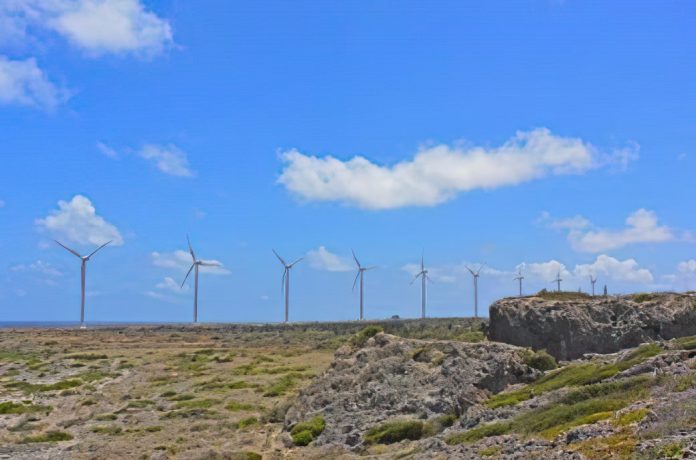(Oranjestad)–If you’re ever taking a tour of Aruba, San Nicolas would definitely be on your itinerary. From relaxing on the white, sandy beaches of Baby and Roger’s Beach, to exploring the prehistoric caves of Quadirikiri and Fontein, you are taking in a full view of what San Nicolas has to offer. But did you know that you are also passing through areas whose names have historical origins? Here are a few place names in San Nicolas and their origin story.
Sero Colorado
On your way to Baby or Roger’s Beach, you’ll pass by the famous Red Anchor at what was once the entrance to the Colony residential community and be greeted with red soiled hills by the coast. This is Sero Colorado. Named after the 30-meter, deep red, limestone hill, “Sero Colorado” translates to “Colored Hill”. Sero Colorado has deep historical ties with the once-thriving phosphate industry in the area. Matter of fact, there are still underground shafts and passages deep in Sero Colorado from the time of phosphate mining. In 1958, the refinery at the time, Lago, adopted this name for the residential section of its employees.
Vader Piet
Another well visited area, Vader Piet is located in the Arikok National Park. Recognizable sites within this area includes the Wind Mills and the Quadirikiri Cave. The origin of this name is part historical and speculation, as there are slight deviations from what actually happened.
In 1829, Pieter Lampe was a planter and the person responsible for governing this remote area. As the story goes, Pieter was well known and beloved for his kindness and good treatment of his employees, and was therefore also called Vader Piet (Father Piet). However, he was tragically murdered—some speculate at the hands of a slave. For his work and good heart, the area was named after him.
San Nicolas
Of course we can’t forget San Nicolas itself. Much like Vader Piet, the origin of the name San Nicolas has so far two different accounts. In the literal sense, “San Nicolas” translates to “Saint Nicolas”, leading many to believe that this district was named after a Spanish saint. Though one account does support this with the theory that the district was named after the saint by Spanish colonizers, the other account is much less divine, but does refer to an influential figure in the area.
Nicolaas van der Biest was a successful landowner during the time of the phosphate boom in late 19th century Aruba. Back then, landowners (most, if not all of them men) were referred to as “Shon” by their subordinates. So, the district was originally named after Shon Nicolaas. Over time, the name evolved into what is now San Nicolas.
Source: “Aruba: Short History” by Dr. J. Hartog.




















